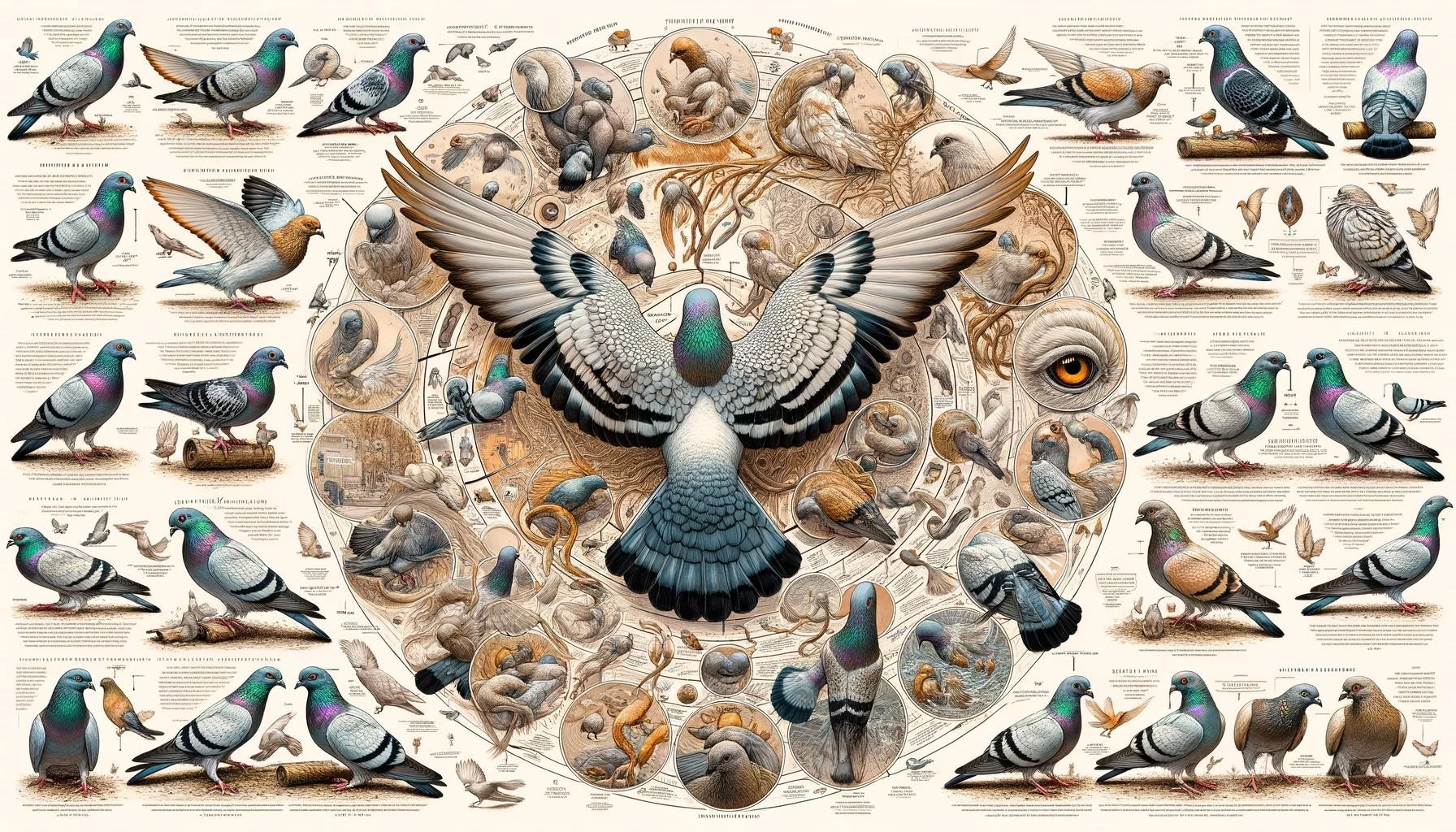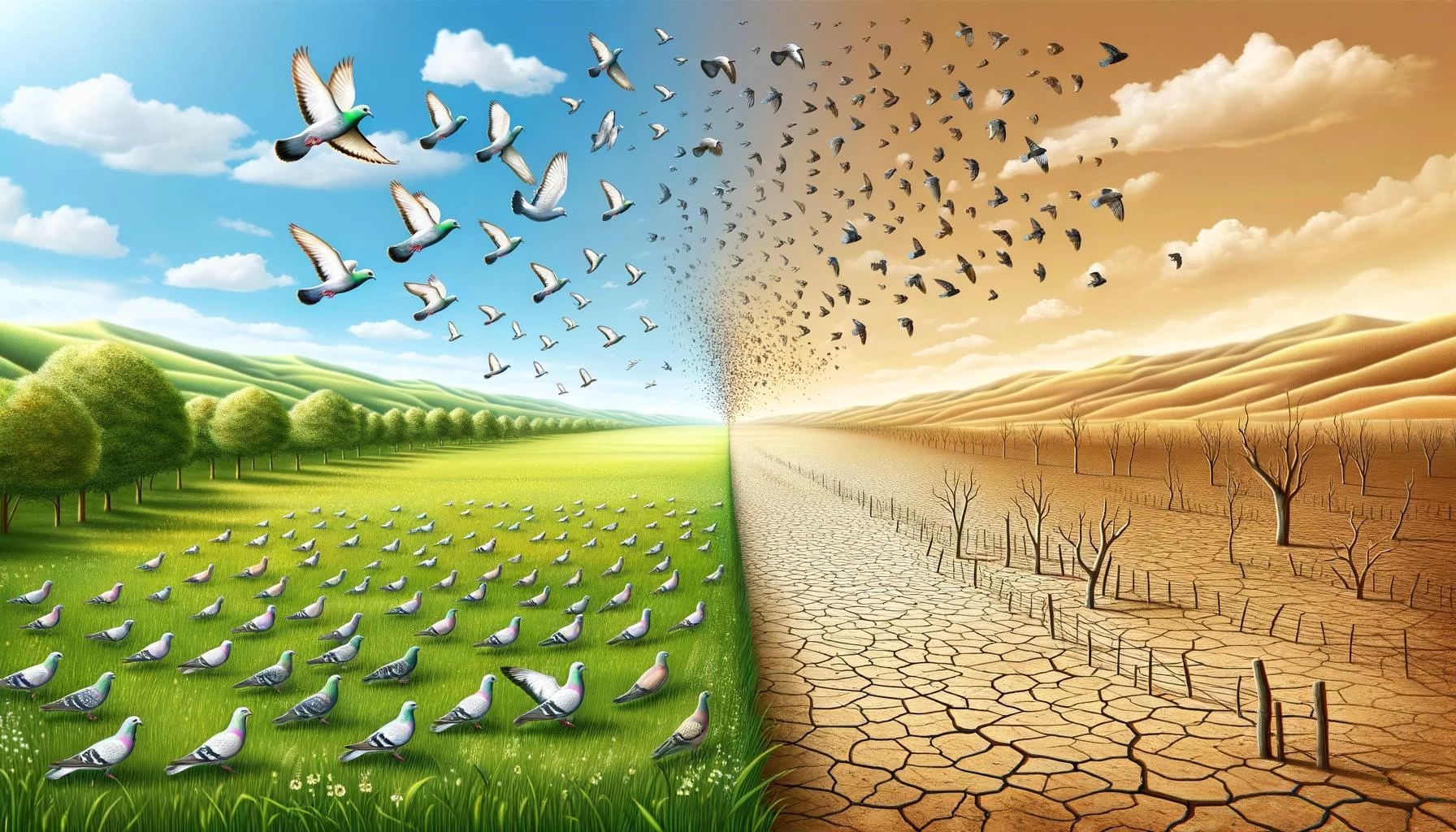Pigeons, like many other animals, are influenced by seasonal changes. These changes can affect various aspects of their behavior, physiology, and habitat. In this article, we will explore some of the key ways in which pigeons are impacted by seasonal variations.
Key Takeaways
- Pigeons undergo molting, shedding old feathers and growing new ones, which usually occurs during late summer or fall.
- Seasonal changes in temperature can affect the feeding behavior of pigeons, with increased activity during warmer seasons.
- Some species of pigeons migrate or make altitudinal movements in response to seasonal changes in food availability.
Molting and Feather Changes
Pigeons undergo a process called molting, where they shed their old feathers and grow new ones. This process is crucial and cyclical for pigeons, usually occurring once or twice a year, often during the late summer or fall when the days become shorter. Molting allows pigeons to replace worn-out feathers and maintain their plumage in optimal condition.
During molting, pigeons may experience changes in their appearance as new feathers grow in. Some pigeons may exhibit variations in color, such as a slightly different shade or more drastic changes like the tiger grizzle pattern. These changes in feather color and pattern can be influenced by genetic factors.
Feeding Behavior and Seasonal Availability
The feeding behavior of pigeons can be influenced by seasonal changes. During the spring and summer, when temperatures are warmer, pigeons are generally more active in their search for food. These seasons provide abundant food sources, including insects, grains, seeds, berries, and fruits.
In contrast, during colder seasons like fall and winter, food sources may become scarcer, leading to a decrease in the feeding activity of pigeons. However, in urban areas, where human-provided food sources like bread crumbs and nuts are available throughout the year, pigeons may not exhibit significant changes in their feeding behavior.
It is important to note that feeding behavior can also be influenced by factors other than seasonal changes, such as availability of food and competition with other bird species.
Migration and Altitudinal Movements
Some species of pigeons are migratory or exhibit altitudinal movements in response to seasonal changes. Migratory pigeons move from one geographic location to another in search of food and better breeding conditions. Altitudinal movements refer to the vertical movements of pigeons, usually between different elevations within their habitat.
Migratory behavior in pigeons can be influenced by seasonal variations in food availability. For example, during colder seasons, some species of pigeons may migrate to warmer regions where food is more abundant. Conversely, during food-rich seasons, pigeons may migrate back to their breeding grounds in search of suitable nesting sites.
Altitudinal movements in pigeons can also occur in mountainous regions where they move to higher elevations during the breeding season and lower elevations during colder seasons. These movements allow pigeons to take advantage of different food resources and optimize their chances of successful breeding.
Overall, pigeons, like many other animals, are significantly influenced by seasonal changes. These changes impact their molting, feeding behavior, and movements. Understanding how pigeons adapt and respond to seasonal variations is crucial for their conservation and management.









